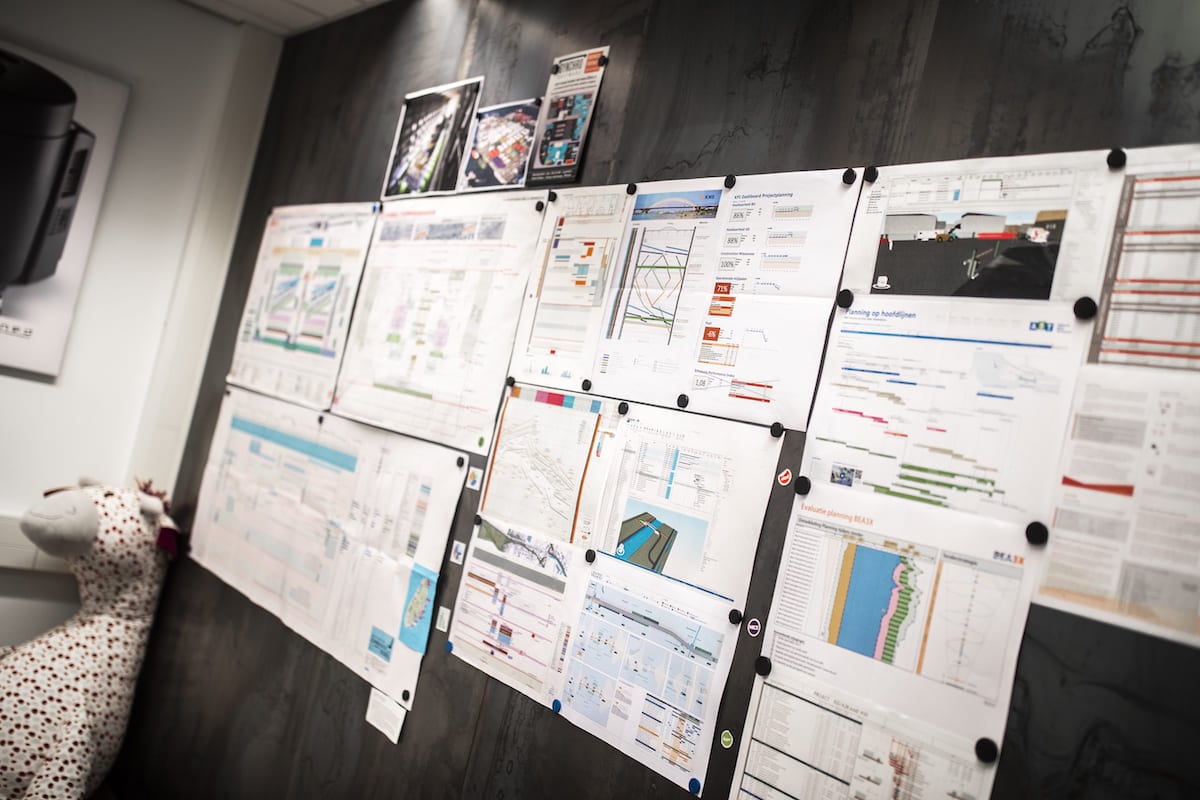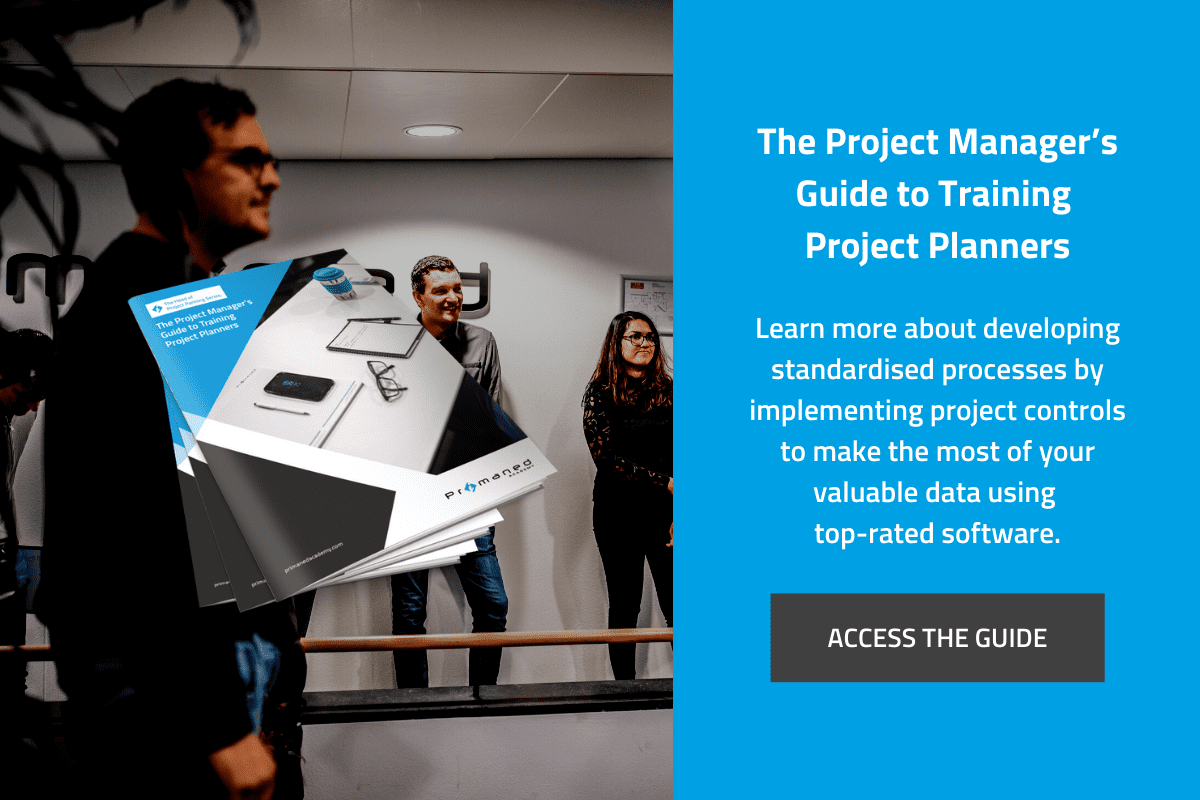Project Control Examples: Why Savvy Heads of Planning are Elevating Project Controls into Their Project Team Training
By Paul Vogels on Sep 2, 2021 9:30:00 AM

Project Control Examples: Why Savvy Heads of Planning are Elevating Project Controls into Their Project Team Training
Project controls may not be something you hear everyday within your industry, but the truth is that savvy Heads of Planning are rapidly starting to elevate project controls knowledge into their team training, and you should, too.
The Benefits of Project Controls
Incorporating project controls into training helps your project planners to make data the central aspect of any project which, in an increasingly data-driven environment, is essential to future-proofing project teams, and even future-proofing organisations themselves.
Project controls make it easier to derive full value from the growing amount of data that are shared and collected throughout the entirety of the project lifespan.
This can enable stakeholders to better visualise, monitor, and analyse this data for improved planning, significantly reduce project risk, boost outcomes, and create maximum value for absolutely everyone involved, right through from graduate project planners to the client themselves.
Project Controls Knowledge Areas
Perhaps one of the biggest obstacles standing in the way of even more Heads of Planning elevating project controls into their team training is a misunderstanding of what project controls is really all about.
Project controls are a subdivision of project management, used to ensure a project stays on track and on budget. Controls are data driven processes and enable and empower teams to gain a comprehensive understanding of a project - from start to finish - in order to shape the way they work and align efforts with real time project needs.
Examples of project controls knowledge areas include:
- Scope: Defining what needs to be done. What’s involved in the project?
- Time: Defining timelines and schedules. How much time do we have to do it
- Cost: Defining budgets. What will it cost to do this in X amount of time?
- Risk: Defining obstacles. How will potential challenges impact plans?
Having this knowledge enables Heads of Planning to do three things:
- Make better decisions FOR a project. Project controls allow leaders to compare their own team’s capabilities with the client criteria to make better decisions about whether to accept or reject a project based on whether it can be completed as required.
- Make better decisions DURING a project. Project controls allow planners to better estimate demand during a project, taking proactive measures to ensure teams are able to meet this demand, whether for more resources, more tools, or anything else.
- Make better decisions IN a project. Project controls allow Heads of Planning to implement the most effective preventative or recovery scenarios when needed. Running out of time? Project data can highlight the most suitable way forward.
All of these aspects come together to answer one very important question: do we still have a business case for accepting - or continuing with - the project in this direction?
Why are Savvy Leaders Using Project Controls?
Now that we’ve looked at some project control examples, let’s take a closer look at what Heads of Planning are getting out of project controls, and why so many forward-thinking leaders are beginning to elevate project controls into team training:
- Improved Delegation
Project controls can allow an organisation’s Head of Project Planning to focus on their own leadership and management responsibilities, rather than trying to juggle leadership with hands-on planning activities.
Project controls is a powerful supporting function for planning teams that enables them to work independently and enables the Head of Planning to delegate with confidence, knowing all planners are working to standards.
- Better Board-Level Communications
Board presentations from different stakeholders across the organisation can muddy the waters, especially when they’re all using different tools, and looking at different data.
When everyone’s using the same project controls to drive and shape processes and decision-making, it allows all stakeholders to present a single, unified message to the board, enabling better high-level decision-making for the future of the project.
- Quality Mark
Quality mark or statement of standardisation is something that more and more clients are looking for during the tender process.
And while project controls have not yet been embraced fully in Europe, they are becoming the standard internationally.
And so, if working with global clients, they will likely be looking to partner with organisations implementing project controls into their way of working. It instills trust.
- In-House Capabilities
Project controls knowledge can remove dependency on the vulnerable and volatile market.
It brings data knowledge and capabilities in-house, building your organisation’s own expertise to ensure you have the skills needed to win tenders, accept projects, and carry them out with efficiency and confidence.
It minimises reliance on the availability of the right external planning experts, at the right time, and can also help to save money, too.
- Candidate Engagement
An additional aspect that’s often overlooked yet is one of the biggest reasons why Heads of Planning are implementing project controls is that it demonstrates that your organisation takes planning seriously, elevating your business within your industry or niche to attract and engage with better talent.
This is essential at a time when finding skilled planners is one of the most challenging tasks for Heads of Project Planning.
- OPC (15)
- Software (12)
- PC Boardroom (11)
- Academy (9)
- Consultancy (7)
- Manager Project Controls (6)
- IT / Procurement (5)
- Planning Engineer / Scheduler (5)
- Project/Assets Manager (4)
- Information Manager (3)
- BI & Data Analytics (2)
- C-level (2)
- Document Controller (2)
- Document Management (2)
- Oracle Aconex (2)
- Project Controls (2)
- Risk Manager (2)
- Scheduling Lead (2)
- Operational project staff (1)
- PMWeb (1)
- Resource Manager (1)
- Safran Risk (1)
Subscribe by email
You May Also Like
These Related Stories

How Project Controls Reduce Project Risk & Costs, and Improve Your Project Planning to Help You Win More Tenders
How Project Controls Reduce Project Risk & Costs, and Improve Your Project Planning to Help You Win More Tenders According to a recent survey, 93% of projec …

7 Questions to Ask When Shortlisting the Right Project Controls Training Providers
7 Questions to Ask When Shortlisting the Right Project Controls Training Providers If you’ve decided that project controls training is the best option for your …

Planning Optimisation: How to Use Project Controls with OPC to Reduce Buffer Times and Increase Project Capacity
Planning Optimisation: How to Use Project Controls with OPC to Reduce Buffer Times and Increase Project Capacity For as long as you can remember, buffers have b …



